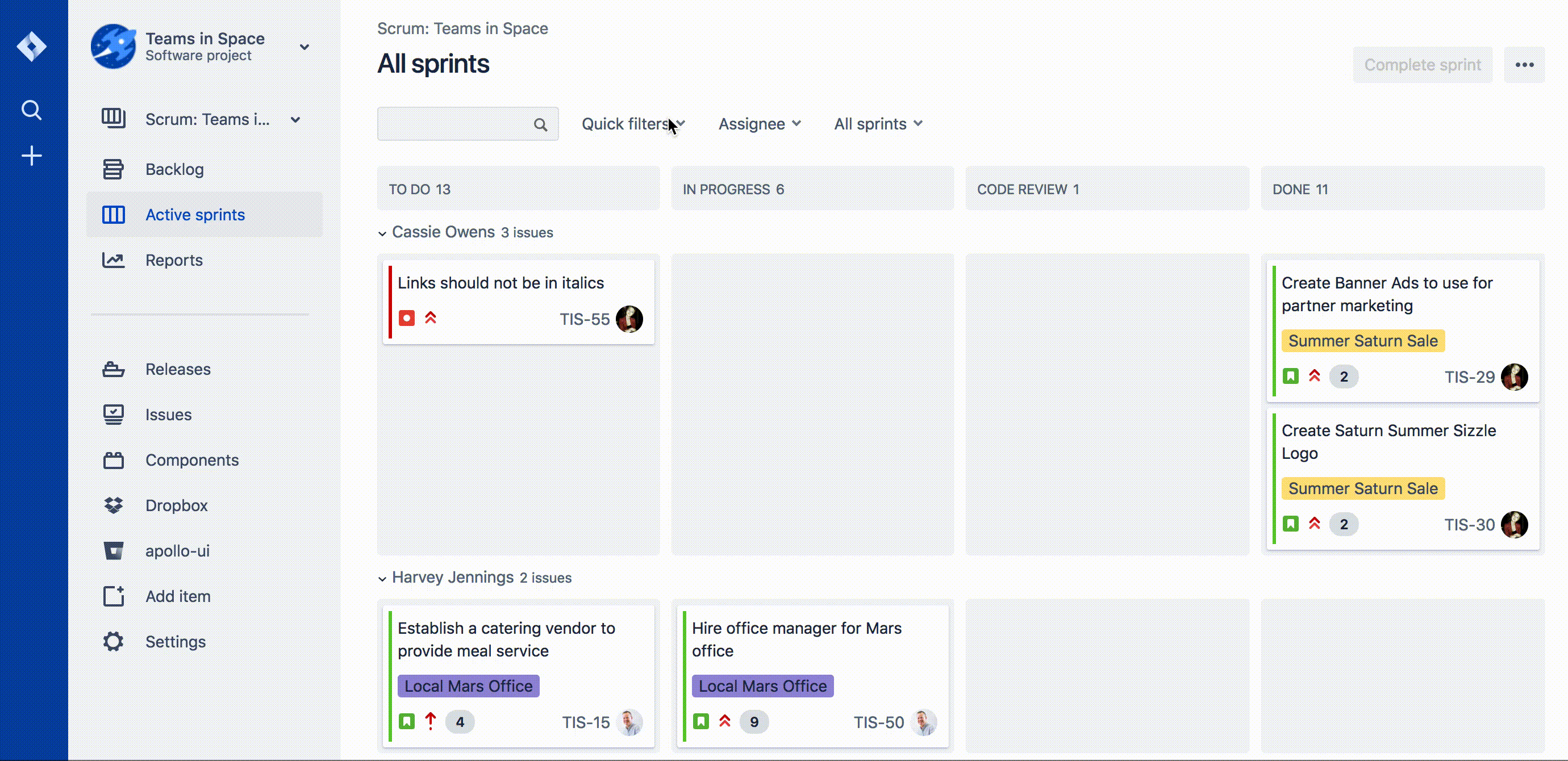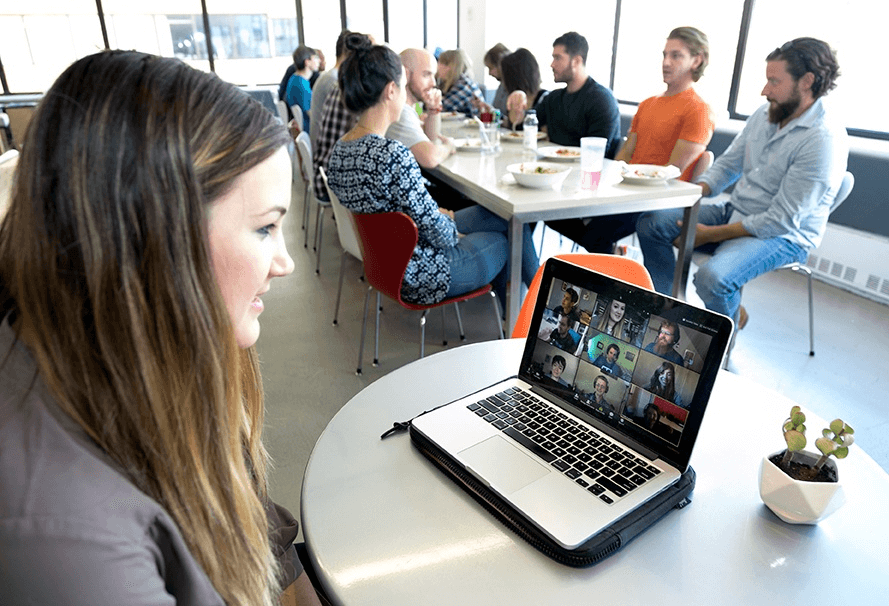Stand up meetings are one of the fundamental parts of agile development, and it’s often the most misunderstood. Let’s be real: stand-ups by themselves don’t make your team agile. They aren’t about inflating egos or justifying job descriptions. They aren’t a time to plan; Sprint planning is for planning. They also aren’t the only time to mention blockers. If you’re stuck, ask for help!
In this article, we’ll talk about how to effectively manage blockers as well as offer other great tips and tricks we use at Atlassian. We want to help you make your stand-ups (and your overall agile program) awesome.
What is a stand up meeting in scrum?
The daily stand-up is a short, daily meeting to discuss progress and identify blockers. The reason it’s called a “stand-up” is because if attendees participate while standing, the meeting should be kept short.
For software teams, a stand-up is like a sports team’s huddle. Like (American) football and rugby, the team huddles before each play. The huddle is strategic: it keeps the team informed, connected, and calibrated throughout the game. For software teams, the stand-up is like the team’s huddle. It’s even commonly known as the daily scrum, and reinforces “we” to keep everyone aware of the team’s landscape and progress.
Here’s a daily stand-up template to get you started.
Said another way, a stand-up is a daily meeting that involves the core team: product owners, developers, and the scrum master. This meeting’s flavor is unique to each team, but at Atlassian we use three simple questions to generate structure:
-
What did I work on yesterday?
-
What am I working on today?
-
What issues are blocking me?
These questions highlight progress and help flag team blockers. Also, it strengthens the team when everyone shares the progress they’re contributing to the team. The daily reinforcement of sharing individual successes and plans keeps everyone excited about the team’s overall contribution to the organization.
At the individual level, it’s important to walk into the day's stand-up knowing what you’re going to say. It keeps the energy of the stand-up high and everyone engaged. At Atlassian, individuals use Jira boards to keep on top of their projects with quick filters. Two great filters that can be used together to help prepare for stand-up are “only my issues” and “recently updated.” When these two filters are used together, they show the issues assigned to you and that have been updated in the last day.

One popular customization of the Only My Issues filter is to add the participants field from the Jira Toolkit Add-on. This adds any issues you’ve touched rather than just issues assigned to you. The JQL for that filter would be:
assignee = currentuser() or participants in (currentuser())
Stand-ups at Atlassian
Stand-ups are not a one-size-fits-all meeting. At Atlassian, each team has a personalized stand-up to keep everyone involved and engaged. No two are exactly alike.
Let’s dig into what makes a great stand-up, and check out some of our examples.
-
Choose a time that works for everyone – At Atlassian, most stand-ups for co-located teams happen between 9 and 10 a.m. It gives everyone time to get context for the day and doesn’t require everyone to be an early riser on the team. For teams spread across different geographies, choose a time that works for all people. For example, the Jira Service Management team is spread between San Francisco and Sydney. Their stand-up is at 3:30 p.m. San Francisco time. Sure, an afternoon stand-up is a bit non-conventional, but it’s a great way to stay in touch with colleagues across the globe in Sydney.
-
Keep stand-up efficient – Many teams at Atlassian informally time their stand-ups to keep everyone focused and to keep the stand-up efficient. Rotate who keeps time to make sure everyone is accountable and invested. Limit the duration of stand-ups to 15 mins–max. Have a smaller team? Make it a practice to keep the stand-up even shorter.
-
Play catch – The Jira team tosses a beachball between team members to keep everyone engaged. No one can toss the ball to someone next to them or to someone who has already gone. No zoning out! If you haven’t tried the technique, it’s a great way to keep everyone involved.
-
Make the stand-up a part of the team’s retrospective – Stand-ups are part of many agile cultures, but it doesn’t mean that the team can’t discuss the effectiveness of stand-ups in retrospectives. Some Atlassian teams meet daily. Others meet three times a week. The Jira team regularly discusses how to make stand-ups better for the team in retrospectives. If the team isn’t finding value in a stand-up, discuss why. Make some changes! Stand-ups are agile too!
Here’s a retrospective template that can help your team retrospect.
Some Atlassian teams integrate Crontabs, Pandora, and the team’s Jira wallboard. Crontabs loads Pandora (and the team’s favorite music) 15 seconds before the stand-up to get everyone’s attention and to start on time. The team’s wallboard highlights any blocked issues the team needs to focus in on for the day.
Stand-ups for distributed teams
At Atlassian, we have team members all over the globe: in one of our 12 offices or to otherwise working remotely. We rely on stand-ups to keep everyone connected across geographies. Our heuristic for remote teams is simple: If one team member is remote, treat every team member as remote. This applies to stand-ups as well as all team ceremonies.
Our tip for distributed teams is to have every team member join a video stand-up on their own computer. With everyone in their own dedicated space and on the same video call, the team has leveled the playing field. All team members can see, hear, and experience the same information at the same time.
Check out our Remote Meeting template.
Imagine a team of eight people, with five co-located team members in a conference room and three remote team members on a video call. This presents a challenge for remote team members wanting to pick up on the side conversations, body language, and gestures that don’t always translate through video. Not to mention the challenge of interjecting in a big group. With all eight team members on their own machines, no one will be missing out on important team dynamics.

Tips for remote stand-ups:
- Make team members visual - At Trello, teams use the “Brady Bunch” view on team video calls. This gives visibility to all team members so you can connect with more than just the person that’s talking. Zoom provides this functionality, as do other conferencing platforms.
- Reference your scrum board - Gathering “around” your team scrum board can be a powerful way to keep everyone on the same page. Your work board can help visualize each user story and work item as team members share what they’re working on and where they’re blocked.
- Be open to asynchronous stand-ups - For teams without overlapping work hours, asynchronous stand-ups are the way! Teams can Slack or comment on their work board to share updates as they come online. With Slack and Jira integrated, you can communicate what you want to get out of a stand-up meeting. Adding a little wink and some personality to asynchronous stand-ups helps keep everyone engaged.

Stand-ups are just one part of a healthy agile program. Just like other scrum ceremonies like sprint planning, sprint reviews, and retrospectives, stand-ups take time and iteration to get right. Don’t be afraid to make improvements that suit your team and your program. And don’t forget to have fun.
